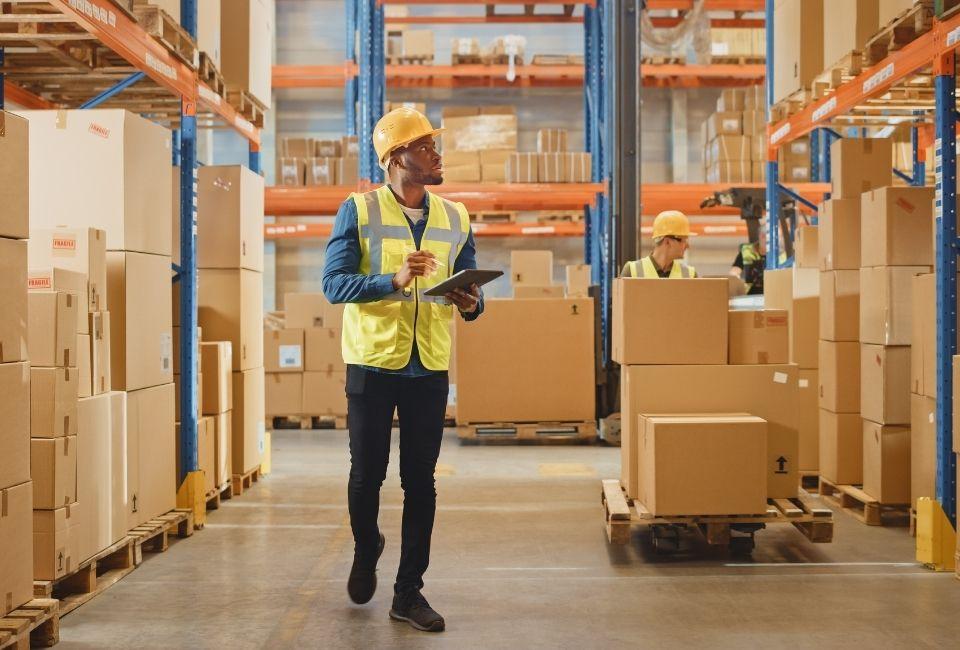Workplace injuries are a major problem in the construction industry. But, it is possible to take steps to make construction zones safer for workers. Keeping a safe workplace actually pays off in the long run. Safe workplaces operate more efficiently with fewer work interruptions due to accidents. Many safety measures are required by law and include significant fines for noncompliance.
Road Construction Sites Need Traffic Control Devices
When a large road construction project is planned, safety measures should be included. Traffic control such as flaggers and signage can save lives. Safety and traffic control equipment used on road construction projects might include electronic signboards, barricades, flaggers, orange traffic cones, flashing lights, and more. This traffic control equipment can save lives and keep the job on schedule.
But, equipment is not all that is needed. There must be a safety plan developed and followed for each project. The steps required to plan a safe construction project include the following.
- Start by developing a traffic control plan to control traffic during the project. There should be an advance work zone warning zone, a work transition zone, the actual work area, and a work termination area.
- Plans must be made and equipment secured to implement the above safety zones so both workers and motorists are protected. Workers must be protected from hazards such as traffic intruding into the work zone, long-term project hazards, projects in high-traffic areas, jobs that place workers close to active traffic lanes, and roadside hazards like drop-offs, and unfinished parts of the road.
- Steps should be taken to increase worker visibility. This means providing high-visibility safety clothing that meets federal safety standards. Daytime and nighttime safety apparel might be different. This must make workers very visible and control the workplace glare. Flaggers must be visible and well-trained to use appropriate hand signals, signage, and other equipment. They must also be properly positioned for effectiveness and safety.
- In spite of signage and flaggers, intrusions do occur, and plans must be in place to handle these situations safely. Workers need time and space to react and get to safety. There are technologies available to deal with this dangerous situation.
U.S. Department of Labor Has Regulations Covering Highway Work Zones
There are federal regulations covering highway construction worker safety. This includes workers for highway, street, road, tunnel, bridge, utility, and more highway infrastructure projects. These workers are exposed to dangers from both inside and outside their work zones. Injuries might include falls, being struck by equipment or vehicles, electrical shock, and being caught between motorized equipment or vehicles. This might cause broken bones, cuts, crush injuries, head injuries, and more.
When such injuries occur, it’s important for workers or their families to understand their legal rights and the potential compensation they may be entitled to. In cases where accidents happen, consulting a legal expert with experience in construction-related injuries, such as Subin Associates Law Firm, can help guide workers through the legal process, ensuring they receive the support they need.
Guidance is available from the Manual on Uniform Traffic Control Devices, or the MUTCD, the Federal Highway Administration, the DOT or Department of Transportation, and OSHA. OSHA has developed a very helpful webpage for use by both workers and employees to find up-to-date and usable information about work zones, signs, signals, and barricades that help make road construction zones safer. They also have an OSHA worker’s page that gives worker protection information and worker’s rights rules.
Every construction company should employ an expert on safety regulations and implementation to make sure all the federal and state safety regulations are followed and workers are safe while on the job. Non-compliance with OSHA and other safety regulations is far more expensive than meeting the standards. Road construction projects can be inspected at any time for safety compliance.

